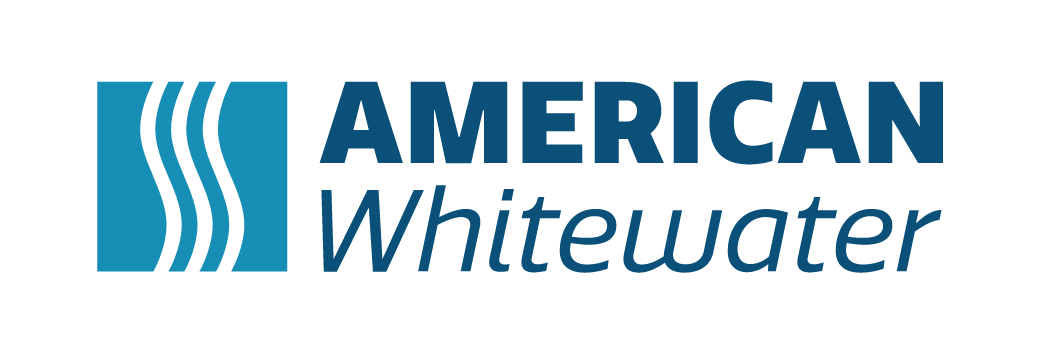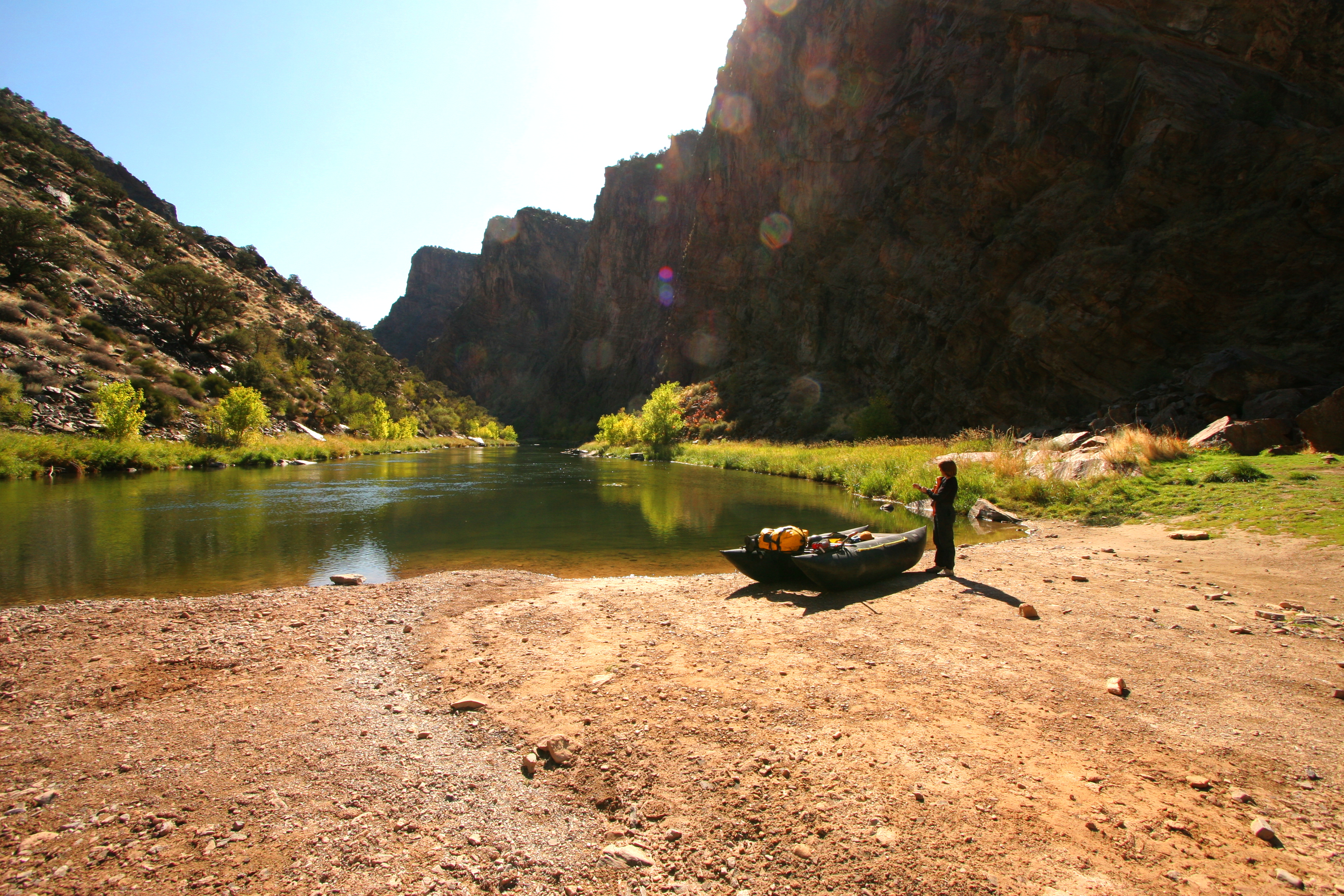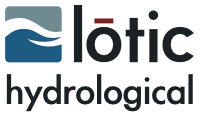Lower Gunnison Environmental and Recreational Flow Tool

This tool enables users to assess achievement of environmental and recreational flow targets on the Lower Gunnison River. Users can assess targets across a user defined historical period of record or input a custom hydrograph for analysis. Environmental metrics and targets in the tool are obtained from a review of operational agreements and published biological opinions related to the Aspinall Unit. Recreational flow preferences are primarily derived from studies developed by American Whitewater.
Reaches include: Black Canyon of the Gunnison , Gunnison Gorge , and the Lower Gunnison . Follow the links to learn more on the American Whitewater website.

Developed by

Tool Instructions
The Lower Gunnison Environmental & Recreational (E&R) Tool enables users to assess the achievement of environmental and recreational flow targets on the Lower Gunnison River. Users can evaluate E&R targets across a user-defined historical period of record or input a custom hydrograph for analysis. Environmental metrics and targets in the tool are obtained from a review of operational agreements and published biological opinions related to the Aspinall Unit. Recreational flow preferences are primarily derived from studies developed by American Whitewater.
Historical Analysis
The user selection tab enables the user to select a historical period of record for the analysis from between 1991 - 2023. The user can also choose two water years to plot as hydrographs against E&R targets. Once selected, the user can start the analysis by clicking the "Run Historical Analysis" button. If input years are changed, the user can select the button again to rerun the analysis. The user can then navigate to the Black Canyon, Gunnison Gorge NCA, or Lower Gunnison tabs to view the historical analysis results.
The Tool evaluates both environmental and recreation flow targets by water year. The Tool defines the water year as April to March. This definition better aligns with Blue Mesa Reservoir's operations than the more traditional October to September definition of a water year. In particular, the April-March water year is better for describing the management of winter streamflows since winter streamflow targets on the Lower Gunnison derive from the year-type designation derived from the most recent April-Jul inflow period.
User Defined Time Series
The user selection tab also lets users analyze a user-defined streamflow time series. The user can enter Black Canyon and Gunnison Gorge NCA data in the "Gunnison.BelowTunnel" column and for the Lower Gunnison in the "Gunnison.Whitewater" column. Users must also select the forecasted Blue Mesa Apr-Jul Inflow (kaf). The forecasted Blue Mesa inflow defines "forward looking" targets that are based on year type or the forecasted inflow magnitude. The time series should be entered for a water year (starting April 1st and ending March 31st).
Environmental Flow Targets
Environmental flow targets are obtained from a review of operational agreements and published biological opinions related to the Aspinall Unit, as well as from recreational flow preference information collected by American Whitewater for reaches of the Gunnison River below the Crystal Dam. The review identified several key documents that reported on environmental flow targets, including the 2009 Programmatic Biological Assessment (PBO, USFWS, 2009), the 2012 Final Environmental Impact Statement (FEIS, USBR 2012), the 2012 FEIS Record of Decision (ROD, USBR 2012), and the 2009 Black Canyon of the Gunnison Water Right Degree. Related reports, presentations, and manuscripts are also examined (McAda 2003, USBR 2021).
Peak flow, maintenance & improvement flows, and baseflow targets on the Lower Gunnison are forward-looking. Targets are assigned to one of six different year-types. The development of these targets is based on the expected recurrence interval of specific inflows as described in the 2009 PBO. Peak and high flow minimum targets for the Black Canyon reach are adapted from the Black Canyon National Park Water Right decree. The water right identifies year-types but does not use them to calculate flow thresholds. Target levels are instead calculated using stepwise equations based on the Colorado Basin River Forecast Center's May 1st Blue Mesa Apr-Jul Inflow forecast (hereafter referred to as May 1st Forecast). The National Park Service designed this approach to ensure a more ‘continuous’ range of flow conditions than would arise from using the year-type approachs.
The DSS Tool accommodates ‘forward-looking’ targets by identifying the target level based on the historical record of May 1st Forecasts. Year-type and continuous-based targets are identified for each year in the user-selected period.
Details on environmental targets for each reach can be found in the tables below:
Recreational Flow Preferences
Recreational flow targets for whitewater activities across the reaches are identified from the Assessing Streamflow Needs for Whitewater Recreation in the Gunnison River basin report (Menges et al, 2013). Supplemental information for other recreational activities including angling preferences are obtained for Gunnison Gorge National Conservation Area (Gunnison Gorge NCA) from the 2012 FEIS.
Recreational flow preferences for whitewater recreation and angling are expressed as user preference flow ranges corresponding to Optimal, Lower Acceptable, and Upper Acceptable streamflow conditions. Flow preferences for angling are only available for the Gunnison Gorge reach. Each year, the count of days suitable for whitewater recreation and angling activities is determined. These days are called 'Boatable Days' and are calculated based on the number of days the streamflow falls within a particular flow preference range.
No targets currently exist for the number of boatable days falling within each category for any given year. However, the optimal and acceptable flow ranges allow for comparison with environmental flow targets. One acceptable goal is maximizing the number of Boatable Days while meeting environmental flow needs. Another goal is to provide a range of recreational experiences across each acceptable and optimal flow range.
The decision-support tool calculates the number of boatable days annually, but only for the 'in-season' periods. The Black Canyon and Gunnison Gorge NCA can only be used for recreational purposes during the in-season boating season, which runs from May to October. During other months, the roads leading to these areas are often inaccessible. Boatable days for the Lower Gunnison are calculated throughout the entire year, regardless of season.
The tables below provide details on recreational flow preferences for each reach. Note that American Whitewater has identified disagreement regarding the maximum acceptable flows for the Black Canyon and GGNCA.
User Selections For Historical Analysis
Make selections from each of the dropdowns below to run the E&R tool. Select a start water year and end water year from the dropdown menus below that you want to use to calculate E&R results. You can also select two water years to display as hydrographs. Tolerances for environmental flow targets can also be adjusted in the advanced settings.
Start the analysis by clicking the 'Run Historical Analysis' button. If inputs are changed, click the button again to rerun the analysis
Once the button is clicked, you can navigate to the Black Canyon, Gunnison Gorge NCA or Lower Gunnison tabs to view results.
User Defined Time Series
You may enter your own streamflow time series data for Black Canyon and Gunnison Gorge NCA in the 'Gunnison.BelowTunnel' column and for the Lower Guinnison in the 'Gunnison.Whitewater'. Values can be entered into the table clicking and editing one cell at a time. Alternatively, multiple values can be copied from a spreadsheet (Ctrl + C) and pasted into a column by clicking a starting cell and then using a keystroke shortcut (Ctrl + V) to enter values into the selected cell and the cells below it. The timeseries should be entered starting on April 1st and ending on March 31st.
Select the forecasted Blue Mesa Apr-Jul Inflow (kaf) below. The forcasted Blue Mesa inflow will be used to define "forward looking" targets that are defined by year type and/or the forecasted inflow magnitude.
Enter the user-defined timeseries below and then start analysis by clicking the 'Run Analysis' button and then navigate to the Forecast Tool tab. If the full table does not appear below at start up, click within the table to expand it.
Once button is clicked, you can navigate to the Forecast Tool tab to view results.
Click `Update Tool Setting` button to make changes to E&R tool settings. Once settings are updated, re-run either the historical or custom analysis for updates results.
Set Environmental Flow Tolerances
Environmental flow tolerances have been set to defaults values based on stakeholder input. Tolerances allow for near-misses to be counted as meeting target goals. The user may adjust these tolerances below. Flow tolerances do not currently apply to the recreational preferences assessments
Select a flow tolerance (CFS) for target assessment Enables near misses based on streamflow magnitude to be treated as achieving target. Example: When flow tolerance is set to 5 CFS, then a minimum flow of 296 CFS would meet a baseflow target of 300 CFS.
Select a duration tolerance (days) for target assessment. Enables near misses based on streamflow duration to be treated as achieving target. Example: When duration tolerance is set to 3 days, a water year with streamflow below 300 CFS for 2 days would meet a target goals of zero days below 300 CFS.
Select a ramping rate tolerance (CFS) for target assessment. Enables near misses based on ramping rates to be treated as achieving target. Example: When ramping rate tolerance is set to 5 cfs, a daily ramping rate of 104 cfs would meet a target of <100 cfs change in flow per day.